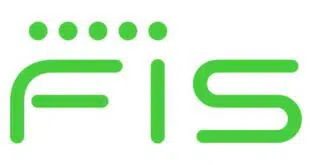Debit cards remain the fastest-growing payment devices and they seem likely to endure a possible economic slowdown better than credit cards, according to a new report from TowerGroup Inc. Nevertheless, financial institutions have a propensity to pump out many more debit cards than consumers want. According to the report, “Crediting Debit: How Debit Cards Will Grow in a Changing Environment,” consumers activate, and keep active, only an estimated 55% of the debit cards banks and credit unions issue. That's in contrast to what Brian Riley, senior analyst, bank cards, at Needham, Mass.-based TowerGroup calls the penetration rate, or percentage of demand-deposit account holders who get debit cards, a rate he estimates at about 90%. Riley says in the study that the “activation rate is the largest challenge in the debit card industry.” Financial institutions largely have themselves to blame for the low activation rate, which Riley says has been down in its current range for about a year. Despite debit cards' utility as access devices to ATMs and as payment instruments in stores, a significant number of consumers either reject or don't know enough about the cards to use them. “They're given out almost automatically when accounts are opened, often without instructions on how to use them,” Riley tells Digital Transactions News. He adds that business owners with debit cards often prefer writing checks because they believe checks leave an easier-to-track payment trail. Apart from the activation cloud, Riley's report paints a mostly sunny picture of debit cards' prospects. The average consumer has 1.1 debit cards, the report says. Consumers who do use debit cards tend to use them aggressively, generating an average of 17 transactions per month. Citing Federal Reserve and Bank of America Corp. data, TowerGroup estimates that from 2005 through this year the compound annual growth rate for PIN-based debit card transactions was 18%, compared with 17% for signature-based debit cards, 13% for automated clearing house payments, 5% for credit cards, zero for cash, and minus 9% for checks. Now embedded in consumers' spending patterns, debit card growth rates will stay in their current ranges through 2009, with credit card transaction growth nearly flat, predicts TowerGroup, an editorially independent research unit of MasterCard Inc. The growth is coming at a time when the personal savings rate has plummeted, a trend Riley attributes to consumers' increasing preference for using debit cards for everyday spending such as groceries. “The transactions still need to come through,” he says, adding that the increasing shift of government payments into debit card-linked accounts also is boosting usage. And a new factor that could give yet another spur to debit cards is a possible tightening of consumer credit if the economy loses steam. “TowerGroup projects that while a weakened economy will continue to erode the rate of credit card transaction growth as consumers and businesses work their way out of a sluggish economy, debit card transaction volume will continue to grow at an accelerated rate and consumables will remain on the debit card despite a decrease in durable purchasing,” the report says. TowerGroup ranks the top 10 debit card issuers of 2007, in millions of cards, as BofA, 32.5; Wells Fargo & Co., 18.1; JPMorgan Chase & Co., 15.0; Washington Mutual Inc., 12.5; Wachovia Corp., 10.0; KeyCorp, 9.1; U.S. Bancorp, 7.2; Citigroup Inc., 5.9; RBS Citizens N.A., 4.3; and Regions Financial Corp., 4.1.
Check Also
Consumers Are Trimming Their Spending, Fiserv Small Business Index Finds
Small businesses experienced a single boost in April from March, according to the Fiserv Small …





